Unlock insight from your Dynamics 365 data with Microsoft Power BI
At Professional Advantage, we specialise in transforming Dynamics 365 data into actionable insights for businesses across all industries. Our unique strength lies in our dual expertise: we not only have the skills to build your analytics platform to manage and analyse your data but also implement and support all Dynamics 365 business applications.
|
Dynamics 365 Business Central |
Dynamics 365 Finance |
Dynamics 365 Sales |
Dynamics 365 Field Service |
|
Dynamics 365 Supply Chain Management |
Dynamics 365 Customer Service |
Dynamics 365 Customer Insights |
Leading Power BI reporting specialists for Dynamics 365 business applications
Why choose Professional Advantage for your Dynamics 365 Analytics project
There are many businesses that use Dynamics 365, but fail to harness the real value of their data. Our Microsoft-certified consultants help Dynamics 365 users turn raw data into actionable insights with interactive dashboards, data integration automation, and AI-driven analytics. Our approach provides you with:

Faster time to value
Our deep knowledge of the Dynamics 365 applications' data structures allows us to quickly design and efficiently implement data models, reducing development time and accelerating delivery of insights.

Optimised ETL processes
We follow best practices to extract data from Dynamics 365 applications into Power BI and Microsoft Fabric. We know where the data lives and what it means which enables us to reduce the risk of data errors, ensuring high data quality and consistency.

End-to-end service
From the initial Dynamics 365 application implementation to ongoing analytics optimisation, we're here to offer our continuous support at every step of the journey.

A proven track record
Beyond our Dynamics 365 expertise we have extensive experience working with other cloud and on-premises data sources. We understand the business context behind the data and can help you build a unified data platform.
“We knew we had a lot of data, but Power BI has shown us just how much is available. Now that we can tap into all of this information, we have a better overview of where to invest to bring positive outcomes to our clients, our employees, and the whole organisation.”
Andrew Pachioli, HSE manager, ADCO Constructions
Dynamics 365 and Power BI implementers in Sydney, Melbourne, Brisbane, and Perth

Over 30 years of partnership with Microsoft, helping organisations achieve more with technology.

300 staff across 7 offices in Australia, United States, and United Kingdom.

90+ net promoter score and 9.7 years average client retention.

Microsoft Tier 1 CSP: Single point of contact for licensing, billing, and local technical support.
Certified Power BI experts for Dynamics 365
As a Microsoft solutions partner for Data & AI, we harness the power of Microsoft's cutting-edge technologies to deliver transformative results for our clients. Our approach combines the deep expertise in Microsoft's data and AI stack with a data-centric project methodology tailored for optimal outcomes. On an individual level our consultants are also certified and hold a range of Microsoft certifications in data and analytics.
|
|
|
|
|
|
 |
Microsoft's Data and AI technologies we work with
|
Microsoft Power BI |
Microsoft Fabric |
Azure AI Services |
Azure Machine Learning |
|
We harness Power BI's advanced analytics and visualisation capabilities to transform raw data into actionable insights, enabling data-driven decision-making across organisations. |
We leverage this all-in-one analytics solution to unify various data and AI services, streamlining data integration, warehousing, and business intelligence. |
We utilise pre-built APIs and models for vision, speech, language, and decision-making tasks, enabling rapid deployment of AI-powered applications. |
This end-to end platform allows us to build, train, and deploy machine learning models at scale, supporting the entire AI lifecycle. |
One-stop shop for Dynamics 365 Consultancy and Data Analytics Services

Dynamics 365 implementation and support
We don't just analyse your data; we can help you set up and maintain your Dynamics 365 business applications, ensuring a comprehensive understanding of your data ecosystem.

Dynamics 365 data strategy
We help you identify key metrics and design a data architecture that aligns with your business goals, leveraging our knowledge of Dynamics 365 business applications.

Power BI implementation
Create interactive dashboards and reports that bring your Dynamics 365 data to life, with insights tailored to your specific business needs.

Data integrations and optimisation
Seamlessly connect your Dynamics 365 data with other sources for a comprehensive view of your business, optimising data flow and analysis.

Copilot and AI-powered analytics
Transform the way your business operates with our Copilot and analytics services for Dynamics 365. Drive efficiency, streamline processes, and enhance decision making with these powerful tools.
Our Data-Centric project approach for Dynamics 365
By combining Microsoft's powerful data and AI technologies with our targeted project approach, we deliver innovative, scalable solutions that drive tangible business value for our clients.

Business understanding:
We begin by thoroughly analysing your business objectives, challenges, and data landscape to ensure alignment between data, AI solutions, and strategic goals.

Data assessment and preparation:
We evaluate available data sources, quality, and relevance. Our team then prepares and cleanses the data, leveraging Microsoft's technology for efficient data integrations and transformation.

Solution architecture design:
We design a scalable, secure architecture using Microsoft's cloud services, ensuring seamless integration with existing systems and compliance with data governance requirements.

Agile development and iteration:
We employ an agile methodology, breaking projects into sprints and delivering incremental value. This approach allows for continuous feedback and adaptation.
A level of engagement to suit your needs

Full management
We handle 100% of the solution implementation and management.

Hybrid approach
A collaborative approach where our consultants share tasks based on client’s skills and identified gaps.

Supervisory role
We provide guidance and expertise as required. Your team leads the implementation.
“We definitely like Power BI and think it will be our BI tool. While we are constantly on the lookout for tools to improve our business practices, any additional BI needs that we identify will be assessed through the lens of can Power BI handle it? From what I have seen with the support of Professional Advantage, I am confident the answer will be yes.”
Julian Mudge, Financial Manager, SS&A Albury
Power BI Solutions for every team and industry
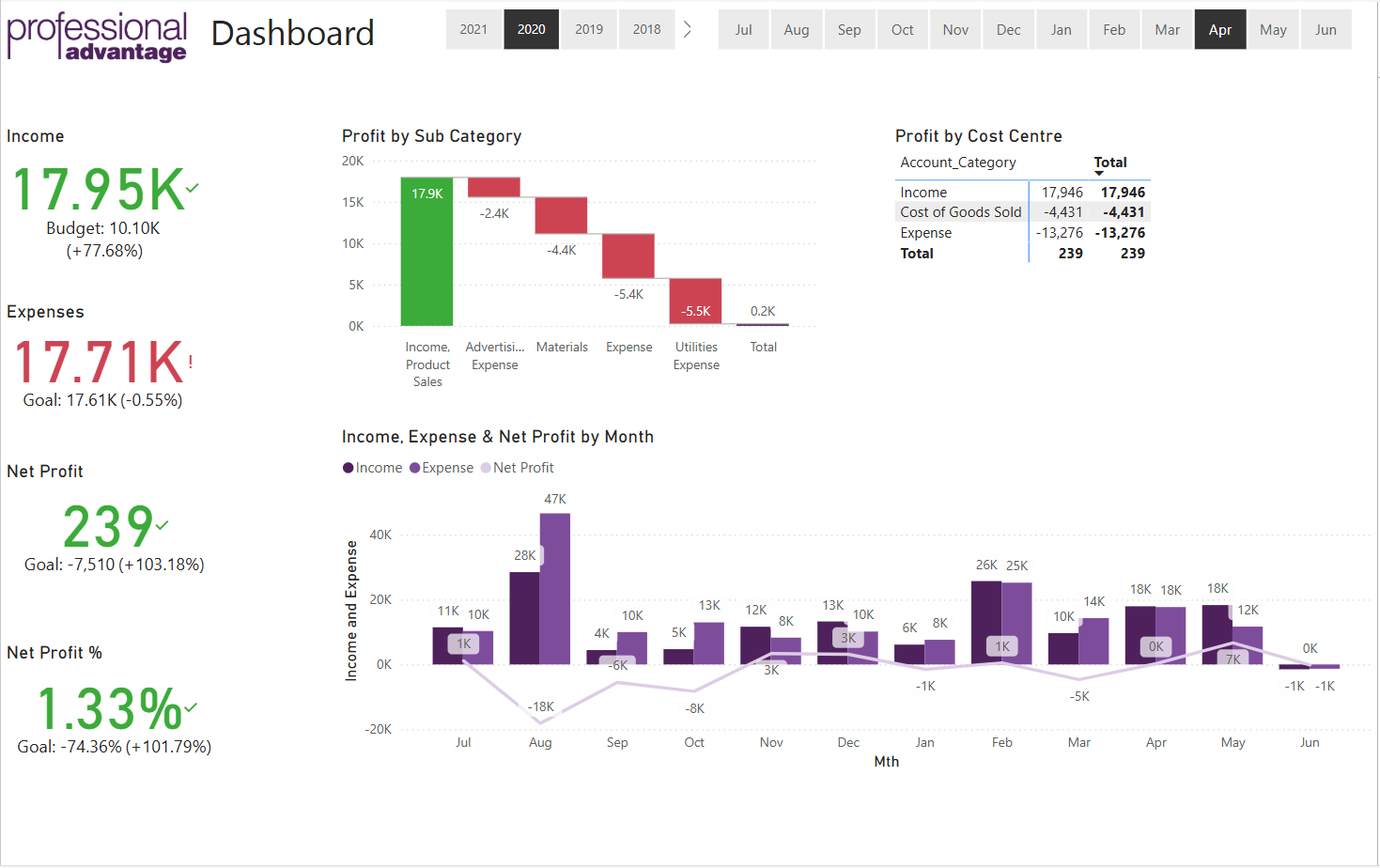
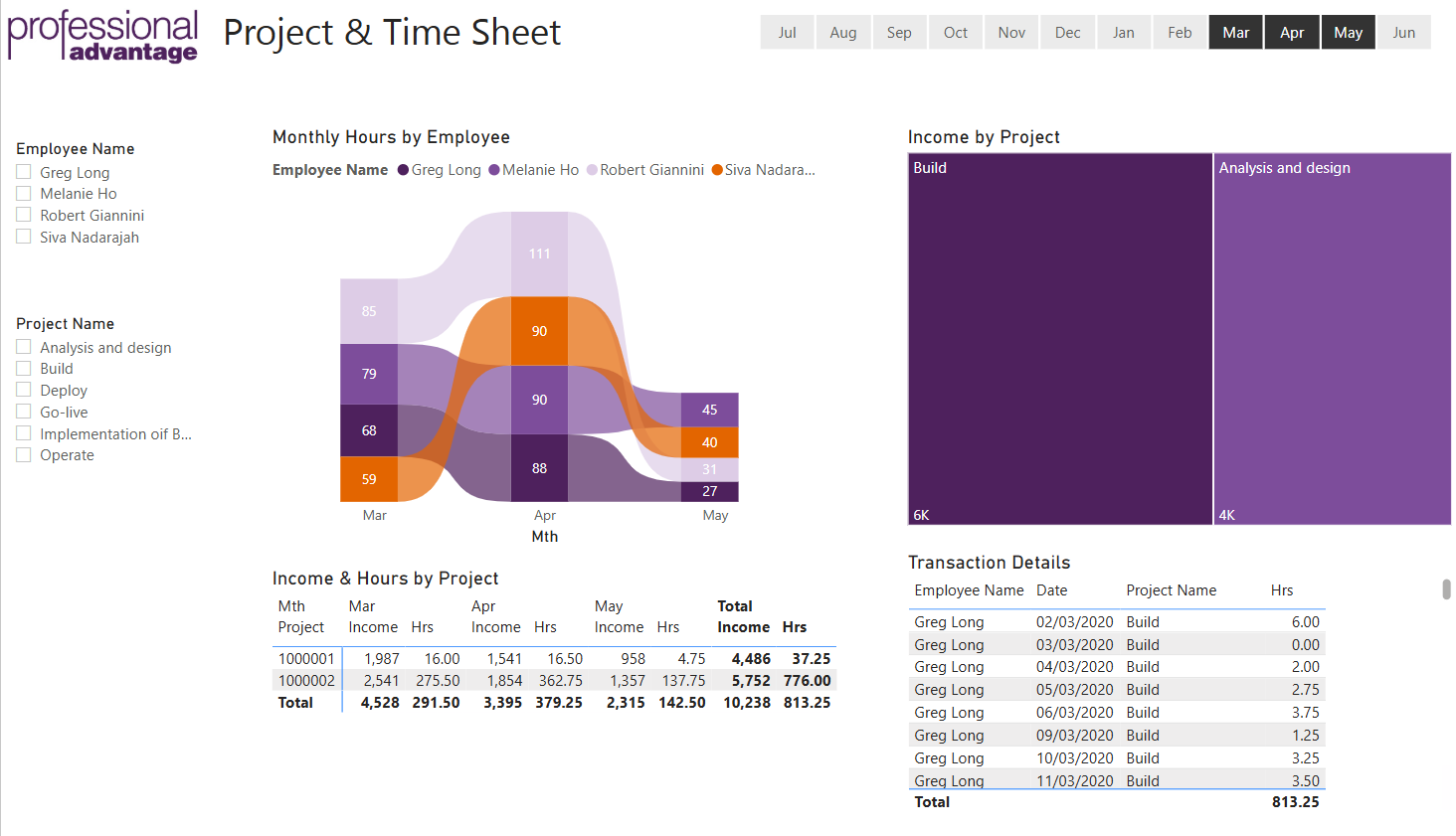
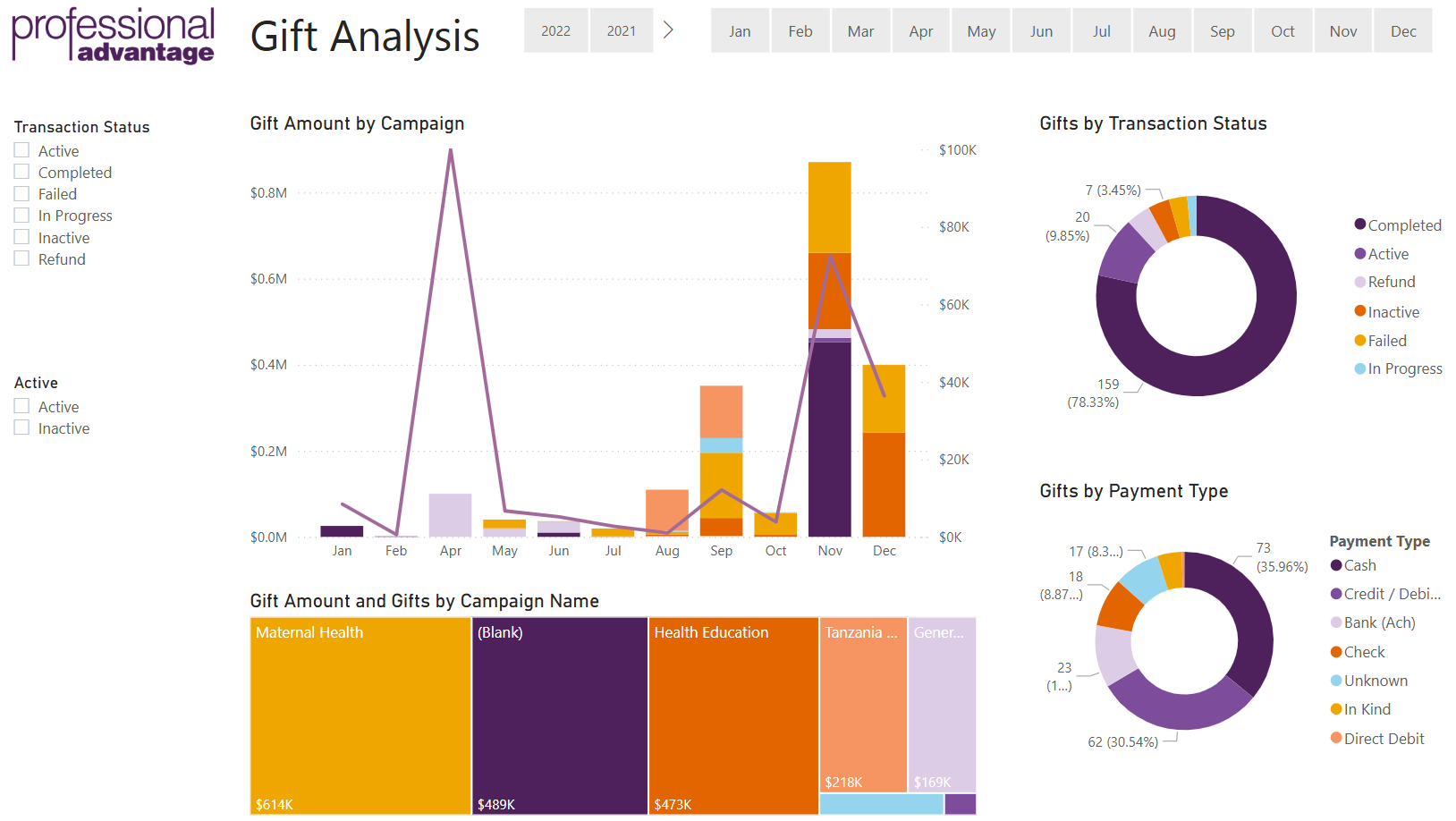

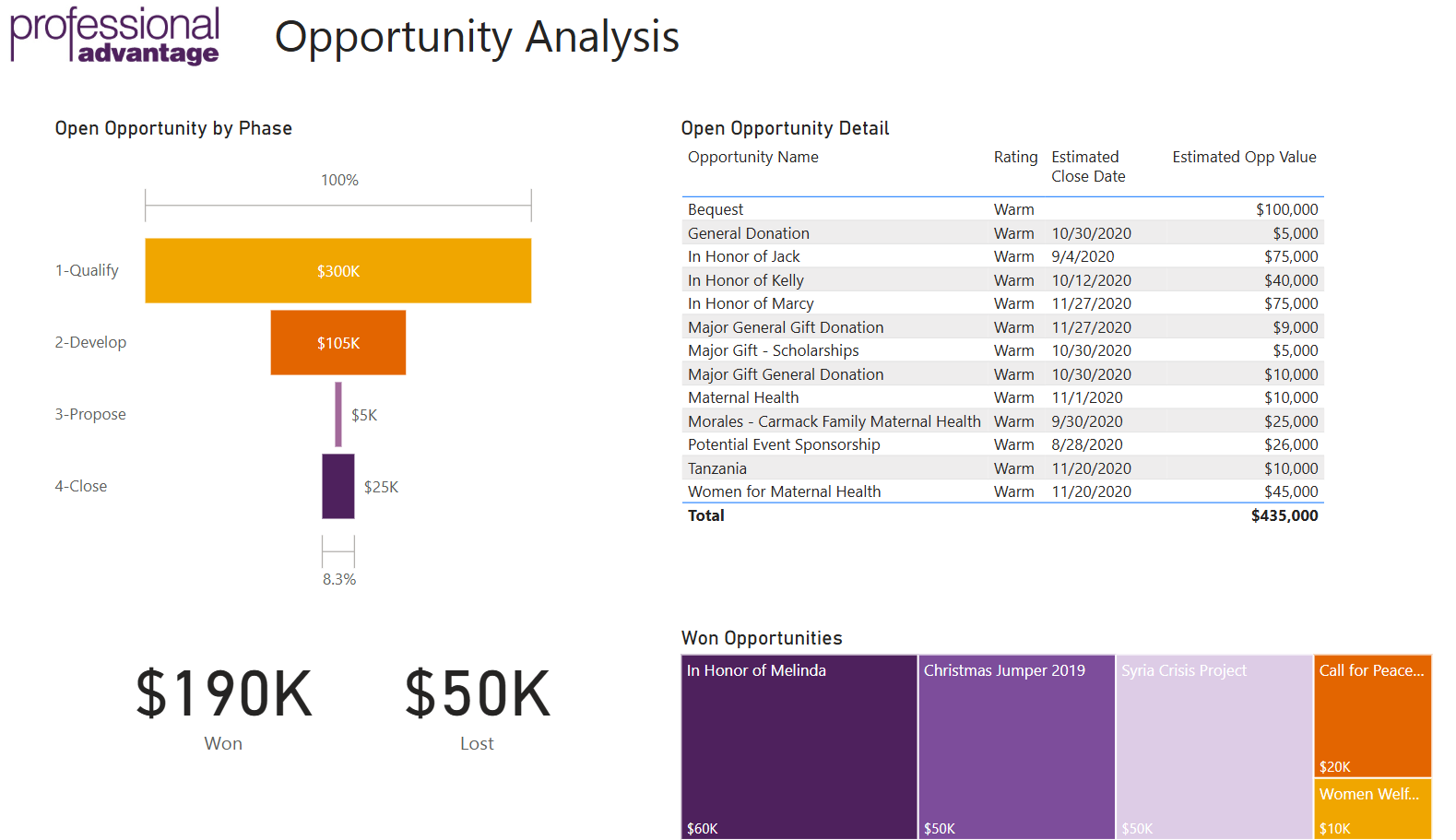
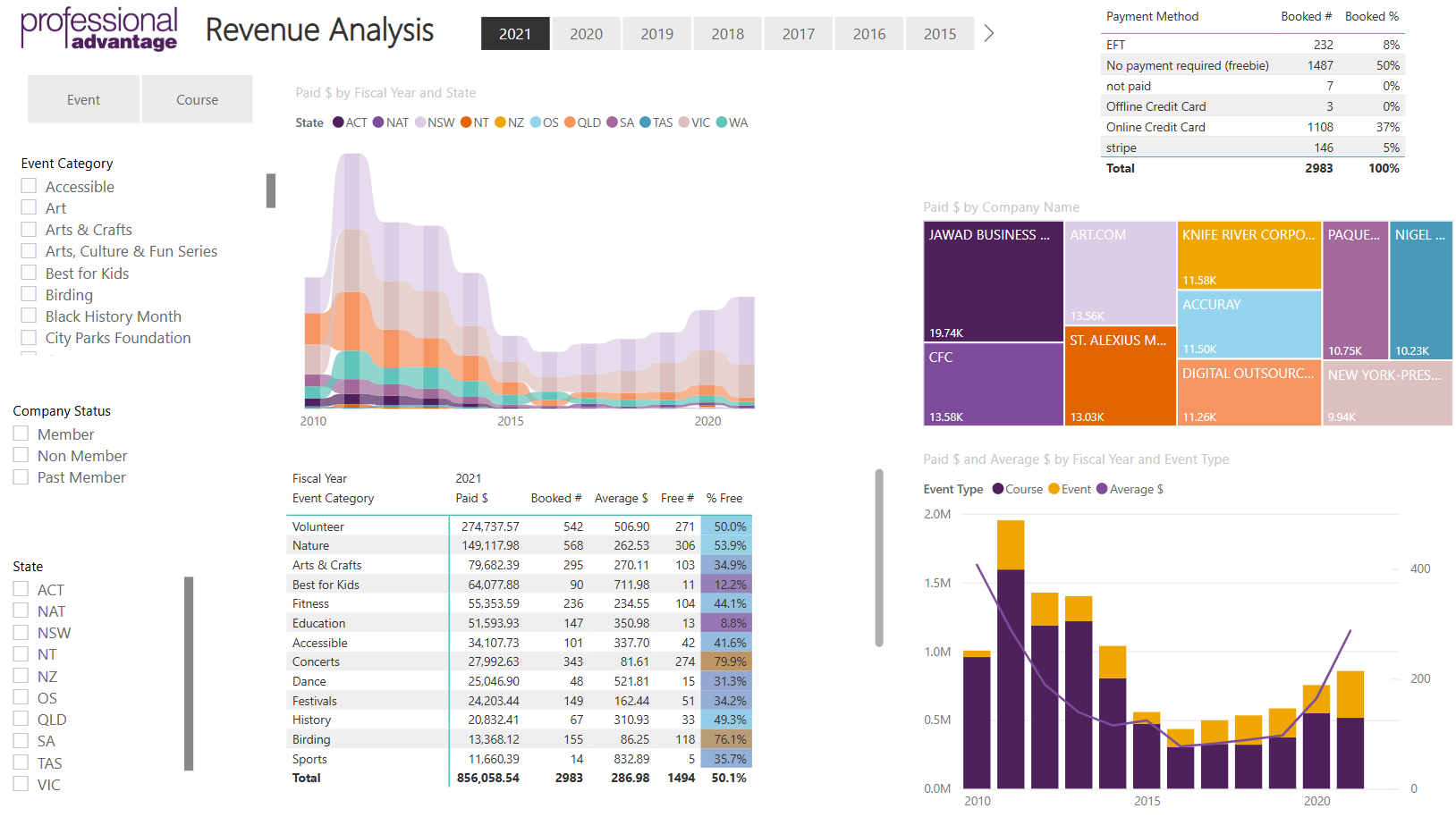
Get expert Power BI advice
Complete the form below, or contact us on 1800 126 499 to speak to one of our experts today.
FAQs
Is Power BI part of Dynamics 365 CE?
Dynamics 365 Customer Engagement (CE), which includes Sales, Customer Insights, and Field Service, is a suite of applications designed to manage customer relationships, sales processes, service delivery, and customer insights. Microsoft Power BI is Microsoft’s business analytics platform, enabling users to visualise, analyse, and share data insights through interactive reports and dashboards.
How do Power BI and Dynamics 365 CE work together?
Close Integration: Power BI is not part of the Dynamics 365 CE licensing or application itself but integrates seamlessly with all CE modules. You can embed Power BI dashboards and reports directly within the Dynamics 365 CE interface, including Sales, Customer Insights, and Field Service.
Data-Driven Insights: Dynamics 365 CE applications capture critical business and customer data. Power BI is the tool that surfaces this data, allowing users to create interactive dashboards, combine data from multiple sources (including non-Microsoft systems), and generate deep operational insights for sales, marketing, and service teams.
Embedded Analytics: Power BI reports can be added to Dynamics 365 dashboards, forms, and views, providing users with real-time analytics in the context of their daily work.
Out-of-the-Box and Custom Reports: There are pre-built Power BI content packs and templates for Dynamics 365 CE, and you can also design custom reports tailored to your organisation’s needs.
Licensing and Application Relationship
Separate Applications: Power BI and Dynamics 365 CE are separate products. Each requires its own licence; Power BI is not included with Dynamics 365 CE, and vice versa.
Flexible Data Integration: Power BI can connect to (almost) any data source, including all Dynamics 365 CE modules, allowing you to consolidate and analyse data across your business.
Key Takeaway:
Power BI is not part of Dynamics 365 Customer Engagement, but the two are tightly integrated. Dynamics 365 CE holds your core business and customer data, while Power BI unlocks the value of that data through advanced analytics and visualisation. To use Power BI with Dynamics 365 CE, you need a separate Power BI licence, but the integration empowers your teams to make better, data-driven decisions directly within their Dynamics 365 environment.
Is Power BI part of Dynamics 365 Business Central?
Dynamics 365 Business Central and Microsoft Power BI are two separate Microsoft applications, each with their own licensing, but they are designed to work closely together to deliver powerful analytics for your business data.
Business Central is a comprehensive ERP solution that manages your core business processes such as finance, sales, purchasing, and operations. This is where your organisation’s vital business data is captured and maintained.
Power BI is Microsoft’s leading business analytics tool. It enables users to visualise, analyse, and share insights from their data through interactive dashboards and reports.
How they work together:
- Seamless Integration: Power BI integrates naturally with Business Central, allowing you to connect directly to your ERP data and surface it through rich, interactive visualisations. This integration lets you embed Power BI reports and dashboards directly within the Business Central user interface so users can access insights without leaving the ERP system.
- Enhanced Reporting: Out-of-the-box Power BI reports are available for Business Central, and you can also create custom reports tailored to your specific needs. This empowers organisations to move beyond static spreadsheets and gain real-time, actionable insights.
- Data-Driven Decisions: By leveraging Power BI’s analytics capabilities on top of Business Central’s data, organisations can spot trends, monitor KPIs, and make more informed decisions to drive business performance.
Licensing and Application Relationship:
- Separate Licensing: Power BI is not included as part of the Business Central licence. While Business Central provides the option to embed Power BI content, users must have a separate Power BI licence (either free or Pro, depending on the features required).
- Distinct Applications: Although closely connected, Business Central and Power BI are distinct products. Business Central is your ERP system, the source of your business data, while Power BI is the tool that brings that data to life through analytics and visualisation.
Which Dynamics 365 modules can you integrate with Power BI?
Microsoft Power BI can integrate with all major Dynamics 365 modules, ERP (Finance & Supply Chain, Business Central) and CE (Sales, Customer Insights, Customer Service, Field Service). You can design reports that draw from the specific modules your business needs, providing actionable insights across finance, operations, sales, marketing, and service teams.
Here are some example modules and reports showing the capability to integrate with all the modules required.
|
Application |
Example Modules |
Example Power BI Reports |
|
Dynamics 365 Finance & Supply Chain (FSC) |
General Ledger, Accounts Payable, Accounts Receivable, Fixed Assets, Inventory Management, Procurement & Sourcing, Project Management, Production Control |
Financial Performance Dashboard, Cash Flow Analysis, Inventory Turnover Report, Supplier Performance, Project Cost Tracking |
|
Dynamics 365 Business Central (BC) |
Finance, Sales, Purchasing, Inventory, Projects, Service Management, Manufacturing |
Profit & Loss Statement, Sales Performance by Product, Inventory Levels, Purchase Order Analysis, Project Profitability |
|
Dynamics 365 Sales |
Leads, Opportunities, Accounts, Contacts, Activities |
Sales Pipeline Analysis, Lead Conversion Rate, Account Growth Dashboard |
|
Dynamics 365 Customer Insights |
Campaigns, Segments, Customer Journeys, Event Management |
Campaign ROI, Customer Engagement Metrics, Event Attendance Analysis |
|
Dynamics 365 Customer Service |
Cases, Knowledge Base, Service Agreements, Queues |
Case Resolution Time, Customer Satisfaction Trends, Agent Performance |
|
Dynamics 365 Field Service |
Work Orders, Assets, Scheduling, Resource Management |
Work Order Completion Rates, Field Technician Productivity, Asset Maintenance Trends |
Example Scenarios
ERP (FSC & BC):
- A CFO might use a Power BI dashboard to monitor cash flow, profitability by department, and overdue receivables, drawing data from General Ledger, Accounts Receivable, and Projects modules.
- An Operations Manager could track inventory levels and supplier performance using data from Inventory Management and Procurement modules.
CE (Sales, Marketing, Customer Service, Field Service):
- A Sales Manager can view a Power BI report on pipeline health and lead conversion rates, using data from Leads and Opportunities modules.
- A Marketing team might analyse campaign effectiveness and customer engagement across multiple campaigns and segments.
- Customer Service leaders can monitor case resolution times and agent workloads, while Field Service teams track work order completion and asset maintenance.
At a high-level summary, Power BI connects directly through Common Data Service or Dataverse (the data storage behind Dynamics 365 apps), via APIs, or by directly reading data from data storage like a Data Warehouse, a Lakehouse, or OneLake if you are also using Microsoft Fabric as your data analytics platform. The latter may be the best approach if you need to combine data from multiple business applications.
How can Power BI be connected to Dynamics 365 Finance and Supply Chain data?
There are three primary ways to connect Microsoft Power BI to Microsoft Dynamics 365 Finance and Supply Chain Management (D365 F&SCM) data:
- OData Feed.
- Bring Your Own Database (BYOD).
- Microsoft Fabric Link.
1. OData Feed – near real-time, but limited
The OData feed provides near real-time access to the transactional database via Dynamics 365’s public data entities. This method is suitable for lightweight, interactive reporting where freshness of data is key.
However:
- It is limited to the entities exposed via the data entity framework.
- Performance may degrade with large datasets or complex joins.
- Only published fields (standard or custom) are accessible, and exposing new fields often requires a developer.
2. BYOD (Bring Your Own Database) – customisable and stable
The BYOD approach allows selected data entities to be exported on a scheduled basis to an external Azure SQL database. Power BI can then connect to this database for reporting.
Advantages:
- Better performance and more control over schema.
- Allows data transformation via SQL views.
- Useful for building a centralised reporting warehouse.
Limitations:
- Still based on the data entity framework.
- Custom or additional standard fields require developer involvement to expose.
3. Fabric Link – full table access with flexibility
The Fabric Link is the most robust and modern integration method for connecting Dynamics 365 Finance and Supply Chain data to Microsoft’s analytics ecosystem. It enables near real-time synchronisation of transactional data into Microsoft Dataverse, where it becomes readily accessible for analysis in Microsoft Fabric or Power BI.
Why choose Fabric Link?
- Direct Table Access: Unlike OData and BYOD, Fabric Link provides access to the underlying raw application tables—not just limited data entities—unlocking greater data granularity and completeness.
- No Developer Dependency: All standard and custom fields are available out of the box, eliminating the need for additional developer configuration or deployment steps.
- Near Real-Time Refresh: Data syncs regularly with minimal impact on the performance of the Dynamics 365 Finance and Operations environment, ensuring up-to-date reporting without compromising system stability.
This approach is ideal for organisations seeking a scalable, low-maintenance, and high-fidelity connection to their ERP data for enterprise-level reporting and advanced analytics.














